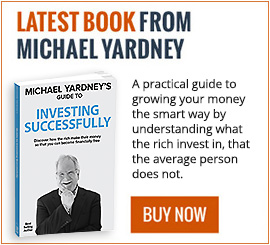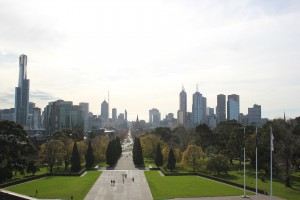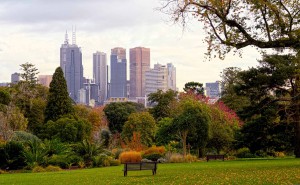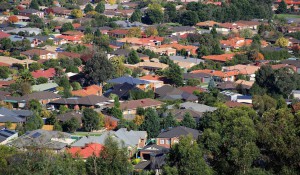There are more interesting articles, commentaries and analyst reports on the Web every week than anyone could read in a month.
Each Saturday morning I like to share some of the ones I’ve read during the week.
The weekend will be over before you know it, so enjoy some weekend reading…and please forward to your friends by clicking the social link buttons.
Melbourne shopping strips becoming home to apartments, not shops, as vacancies rise
Have you noticed a booming change through the strips of Melbourne?
It seems that as well as the coffee capital – Melbourne is vastly become the apartment capital, taking over shop spaces as vacancies continue to rise.
According to an article on Domain.com.au shop doors continue to close down, while apartment doors continue to open.
If you think shops are closing and apartment towers are rising in their place, you’re probably right.
The latest data from Savills shows vacancy rates have soared across Melbourne’s once-popular retail strips — from 7 per cent to 9.2 per cent over the past year — with Richmond’s Bridge Road leading the pack with a vacancy of 15 per cent.
It comes as more than 40 stores were taken off market for apartment developments in the formerly fashion-focused retail strip that had long struggled to compete with glossy new shopping centres — which now in turn face tough competition from online traders.
Shops along other strips including Moonee Ponds’ Puckle Street, Armadale’s High Street and South Yarra’s Chapel Street are also earmarked for residential projects.
Experts say higher-density living in the inner-city, close to amenities, is greatly needed as more people move to Melbourne.
Victoria’s population grew by 2.1 per cent in the past year, compared with 1.5 per cent in Australia.
“Richmond has become a magnet for young millennials, with an increasing number of start-up and creative firms opening up offices in the suburb, attracting a young demographic to live, work and eat in the neighbourhood,” Savills associate research director Monica Mondkar said.
Though an influx of inner-city residents is expected to benefit cafes, grocery stores and services, business owners such as Garry Stylianou did not believe it would bring more activity to his Armadale Antique Centre on High Street.
Mr Stylianou said the younger generation living in apartments would benefit cafes and perhaps fashion shops, and even empty nesters downsizing, were getting rid of their older possessions and buying modern items.
The research found that of the 2618 shops surveyed across ten key retail strips, cafes, restaurants and takeaway food shops experienced the biggest increase, from 484 shops to 581 shops.
Read the full article here
There is no affordability crisis in Australia + Take the media with a grain of salt + Chinese investment expected to fall
Another great Real Estate Talk show produced by Kevin Turner.
Michael Yardney discusses what the correct level of gearing at this time in the property cycle is
Chris Gray says we need to take what the media says with a grain of salt
Dave Platter explains why Chinese buyers are concerned about buying here
Simon Pressley says There is no affordability crisis and looks at the proof
Peter Maloney discusses changes to legislation that will impact vast numbers of buyers and sellers
If you don’t already subscribe to this excellent weekly internet based radio show do so now by clicking here.
First homebuyers to dwindle until July
As the number of first home buyers continue to decline, all eyes will be on the numbers for July.
This Blog by Pete Wargent shows the statistics behind the results.
New dwellings
The number of new dwellings financed remained at a historically high level in April, but was slightly lower than in the preceding month.
Analysts are watching closely for signals of this construction cycle rolling over in a disorderly fashion, but up until April at least purchase activity had remained relatively robust.
At the state level owner-occupier financing of new builds is tracking at historically high levels in all three of the most populous states.
First homebuyers to recede
The number of first homebuyers has been sliding in recent years, following on from a huge spike during the financial crisis when a raft of incentives and grants were introduced.
Some first time buyers have been opting to buy investment properties instead in recent times, particularly in expensive Sydney, in turn depressing the number of first homebuyers recorded.
Read the full article here
It looks like Australia’s crackdown on housing investment is starting to work
Following a heavy crackdown on investor lending, the number of investors is starting to reflect the change.
An article on Businessinsider.com.au has raveled the significant change in housing investment and what this could mean for the market.
There are signs that APRA’s move to curb investor activity in Australia’s housing market is starting to work.
The value of new investor lending fell heavily in April.
According to the ABS, the value of investor lending fell by 2.3% to $12.582 billion in seasonally adjusted terms, the weakest monthly total in seven months.
While total investor lending was still up 14.1% from a year earlier, the annual pace of growth now sits well below the 26.7% level reported in January this year.
Investor lending is now cooling, an outcome that will no doubt please the RBA and APRA.
“This is no surprise given the combination of out of cycle rate hike largely aimed at investors and the introduction of additional macroprudential regulation by APRA in late March,” said economists at ANZ.
“The data suggest those measures have had an immediate impact, an encouraging development for the RBA and the regulator.”
And it wasn’t just investor lending that weakened in April, but also to owner-occupiers too.
The ABS said that the value of finance to this cohort fell by 1.1% to $19.892 billion, thanks entirely to a continued decline in loan refinancing.
Excluding refinancing, new lending rose by 0.3% to $14.119 billion, the highest level since September 2015.
That left total new lending to owner-occupiers up 6.2% from a year earlier, almost exactly the same as March.
Refinancing, on the other hand, continued to decline, sliding by 4.4% to $5.773 billion, the weakest monthly total since May 2015. Over the past year the value of refinancing has fallen by 17.8%, the steepest decline in nearly seven years.
Read the full article here
What does your choice of suburb say about you?
If you could live in any part of the state – where would it be?
Did yo know that your choice of suburb could potentially say a lot about who you are?
This article on News.com.au shows the result of one study – analyzing the different types of suburbs and those living in them.
HOW does where you live determine your fate?
From city dwellers and suburban families to rural lovers and remote community members, the region you choose to live in can impact everything from your health to career opportunities, according to a new report by Deloitte.
Deloitte’s fifth The Purpose of Place: Reconsidered report has identified five regions in Australia — inner city, suburban, outer urban, regional cities, rural and remote — and ranked them in terms of quality of living and prosperity.
It reveals how the regions fare in areas including health and safety, social capital, human resources, leadership and contribution and local amenities.
So, what are the pros and cons of living in your region, according to the report?
INNER CITY
The inner cities rank highly in the categories of human resources, local amenities, physical capital, material standards, and innovation and entrepreneurship.
The people who live there are generally highly educated with well-paid jobs and live close to public transport and other amenities.
They are often movers and shakers, willing to change the status quo and take people in new directions.
SUBURBAN
Australia’s suburbs rank highly for local amenities, physical capital and social capital.
This is where people shop nearby for their everyday needs, play sport or go to church.
OUTER URBAN
Outer urban locations enjoy the benefits of being further from the inner-city bustle, and rank highly on natural amenity given their open spaces, natural vistas and proximity to major parks. Indeed, some urban fringe areas adjoin major parks, such as those in the Dandenong Ranges, the Blue Mountains and the Adelaide Hills.
Outer urban areas also rank higher than the suburbs on human resources.
They attract professionals because housing is cheaper than closer to the city while commuting times needn’t be that much longer, especially with express train services and toll roads.
REGIONAL CITIES
Australia’s regional cities rank highly as safe and healthy places to live.
Community life is also generally strong.
People are often passionate about their regional city and like to get involved in local affairs.
Regional cities are also well connected to natural areas, ranking highly on proximity to nature conservation and outdoor tourism.
But they can be difficult places to get to and from, even if there’s an airport.
RURAL AND REMOTE
Rural and remote Australia is, unsurprisingly, rich in natural resources.
Deloitte indicators also suggest that these regions enjoy high levels of leadership and contribution, and innovation and entrepreneurship.
Living and working in remote areas reveals a tolerance to risk that is often associated with entrepreneurship.
Those who live off the land have never been shy of taking risks.
Click here for the full article











No comments:
Post a Comment